In July 2007 we took part in a four week survey in the southern Bay of Biscay for the Seamark Trust (www.seamarktrust.org.uk). Our target species were the mysterious beaked whales inhabiting the Torrelavega Canyon north of Santander, and the study area reached from Santander to Bermeo. The research vessel was the Trust's own 60 foot Moody Grenadier ketch, the Bluefin of Hamble. Water depths reach 3,000 m only a few miles out from the northern Spanish coast, making this area ideal to study the elusive beaked whales.
A total of 13 beaked whale sightings were made, but many were too far away or too brief to identify the animals to species level. But on one occasion we were extremely lucky, when a small group of Cuvier's beaked whales (Ziphius cavirostris) swam straight towards our vessel, showing their short, stubby beaks each time they surfaced.
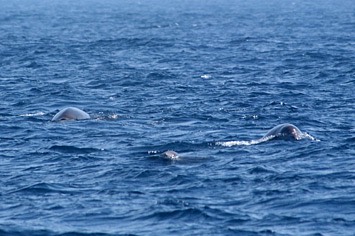
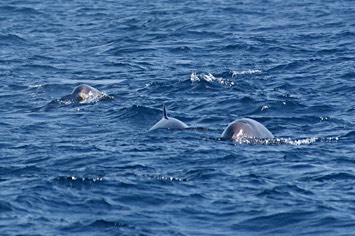
The group then swam straight past the vessel, showing their bodies clearly in profile view. One of the animals was an adult male, clearly recognisable by it's brownish-cream colour and the many rake marks on its body and dorsal fin. These rake marks and nicks in the dorsal fin can be used to identify individual animals and by matching photos taken over the years, much can be learned about the social structure, habitat preferences and population size of Cuvier's beaked whales.
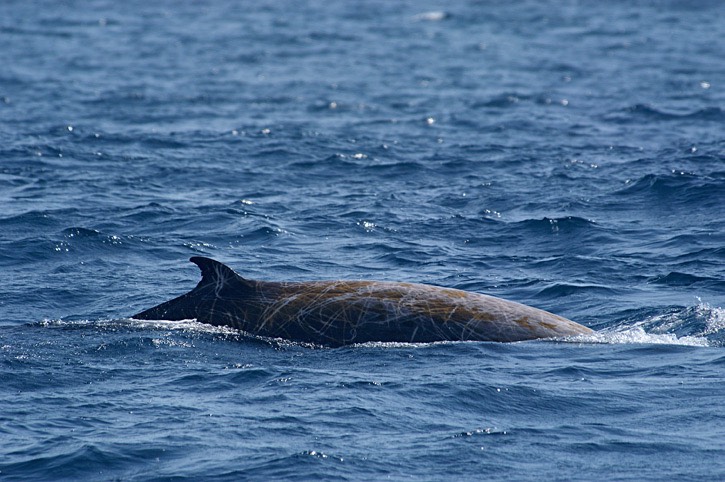
Another individual had a lot less rake marks on a much darker brown body, but it was clearly identifiable by a deep notch at the base of its dorsal fin. Two other whales were dark brown and appeared very similar, except that one had a very small scar on the right flank. Identifying differences in the not so well marked individuals requires a good amount of detective work!
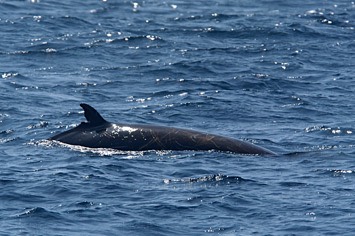
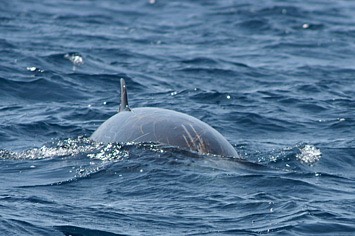
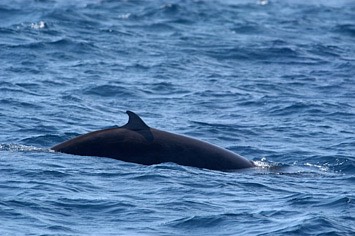
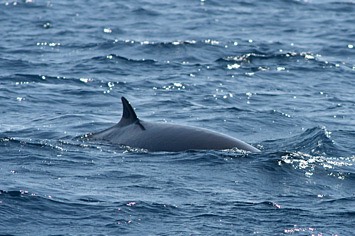
While we usually spent our days systematically searching for the beaked whales, on one memorable day they came to find us. We had just stopped and settled down for lunch, when a huge splash not far off caught our attention. At first we were not quite sure what had caused it, but then a beaked whale breached again - and again, and again! It was quite a spectacular sight, to see such a big animal weighing 2,500 to 3,000 kg, propel itself out of the water so apparently effortlessly. We were not entirely sure about its identity, but assumed that it too was a Cuvier's beaked whale.
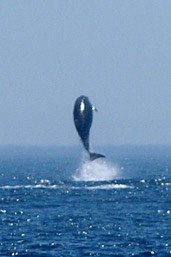
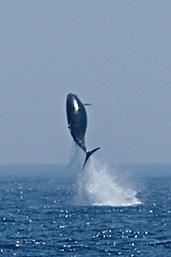
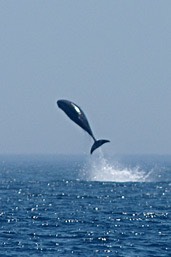
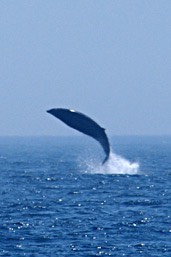
The most frequently encountered species was the striped dolphin (Stenella coeruleoalba), which were seen in large numbers. Unfortunately, striped dolphins don't tend to approach vessels, so we were very happy when a few brave individuals came close enough to have their photos taken.
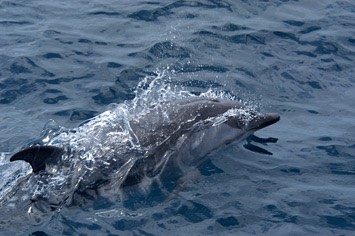
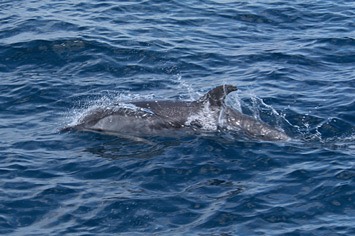
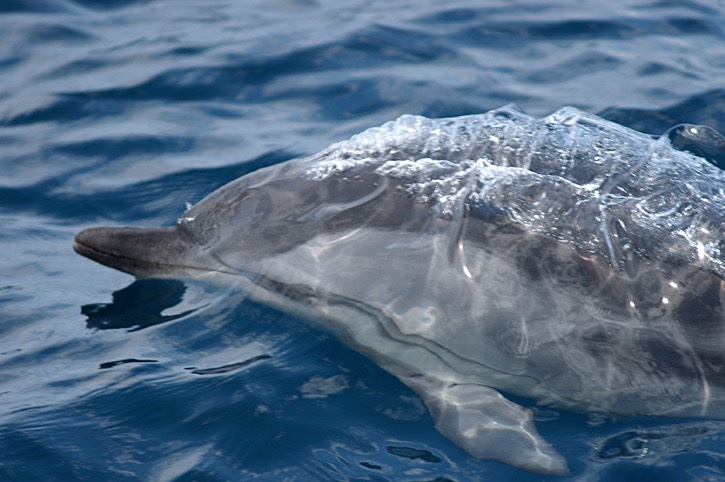
Bottlenose dolphins (Tursiops truncatus) on the other hand approached our vessel on many occasions and gave us some good photo opportunities. Many of the dolphins were well marked with rake marks on their bodies and nicks in their fin, originating from social (or is it antisocial?) interactions between individuals. Some of the animals appeared to be quite thin, with ribs clearly showing on their flanks.
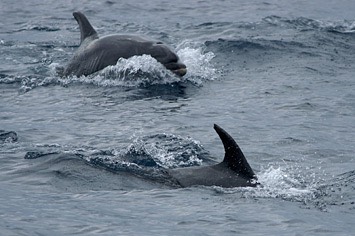
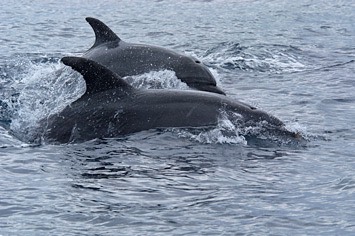
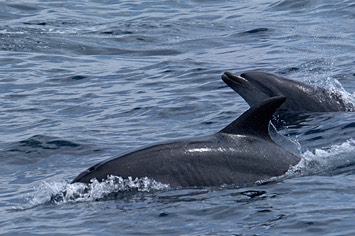
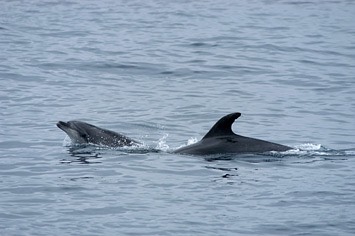
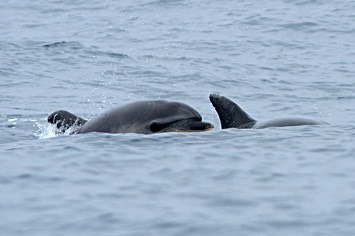
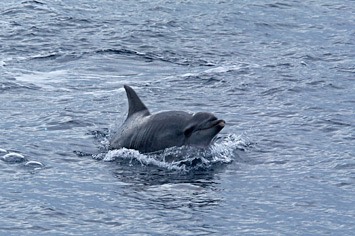
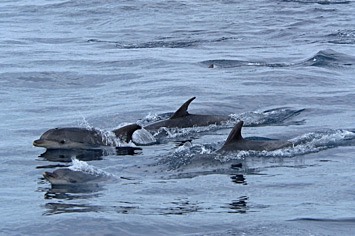
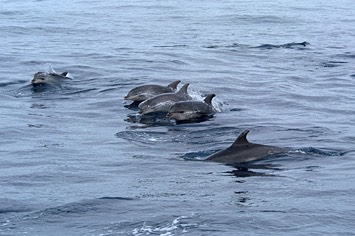
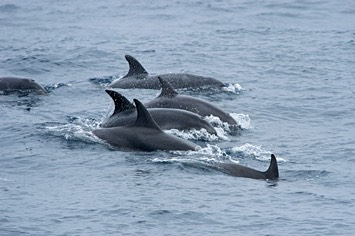
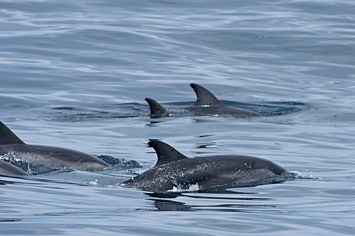
On one occasion, a group of bottlenose dolphins approached the vessel and a juvenile leapt right next to us. His body was still comparatively unmarked, in stark contrast to the adults, whose bodies were covered in battle scars!
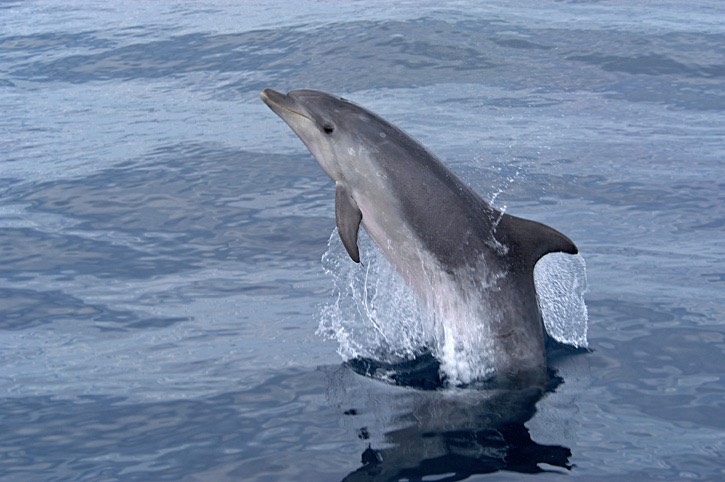
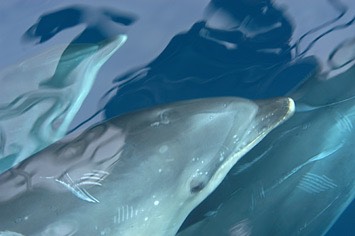
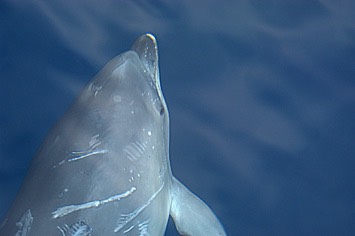
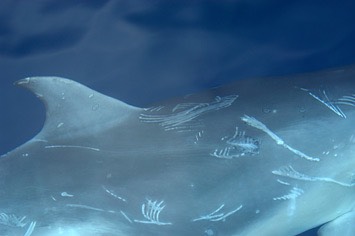
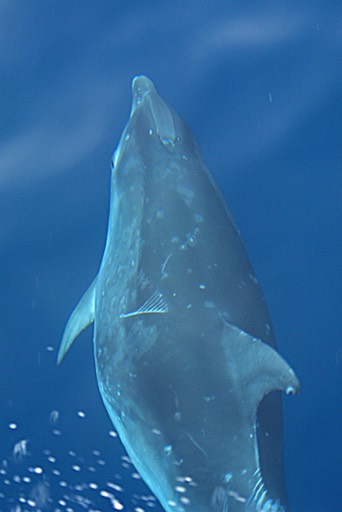
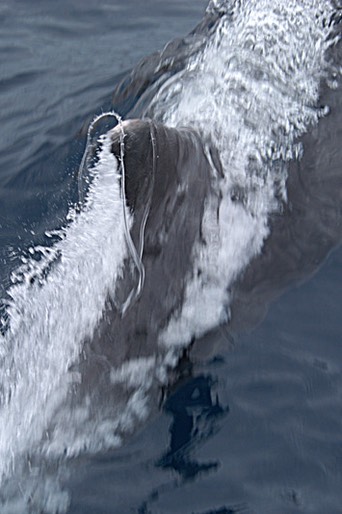
Long-finned pilot whales (Globicephala melas) were seen quite frequently too, sometimes in association with bottlenose dolphins. They were not shy to approach our yacht and we could clearly see their bulbous, beak-less heads and very broad-based dorsal fins. One individual, a big male with a white patch on its dorsal fin, had been seen in the previous' years study, too.
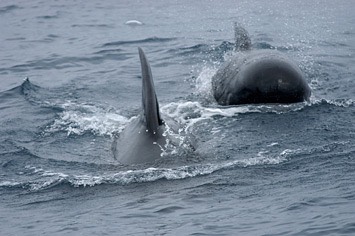
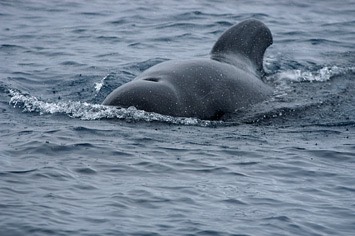
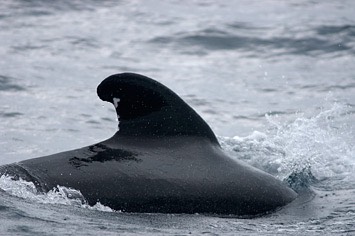
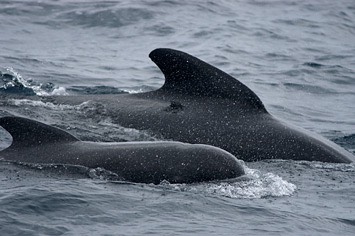
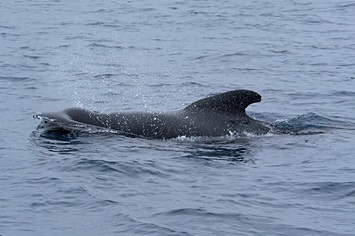
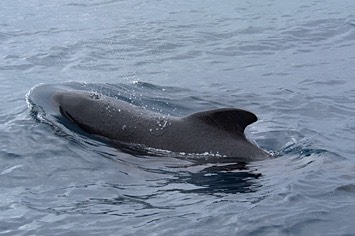
One day brought a special surprise, when we realised that a female pilot whale had a tiny newborn calf by her side! She tried to keep it hidden from us, but we managed to catch some glimpses of its tiny body covered in foetal folds and with its dorsal fin still flopped over to one side.
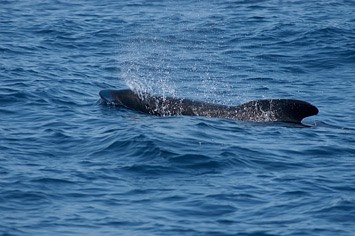
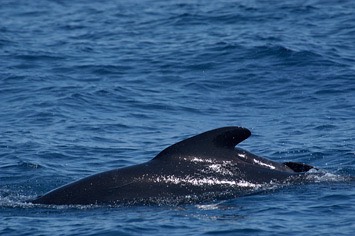
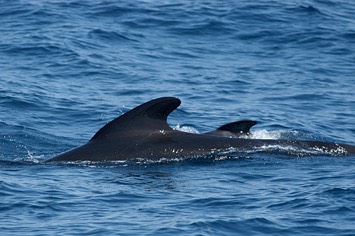
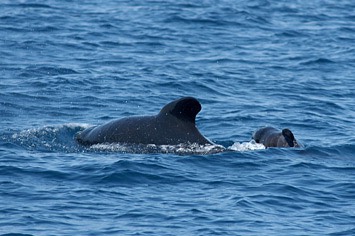
On another occasion a group of pilot whales, including several calves, paid us a visit and even started bow-riding: something that is rather unusual for pilot whales. A young calf stayed close by mum's side and appeared to be as fascinated by watching us as we were by watching it! Another calf that still showed its foetal folds, swam so close to the ship, that we could even see our own reflections on its glossy skin.
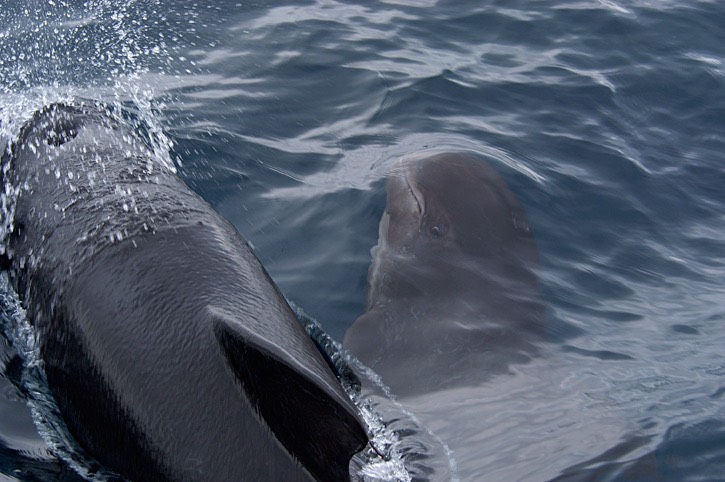
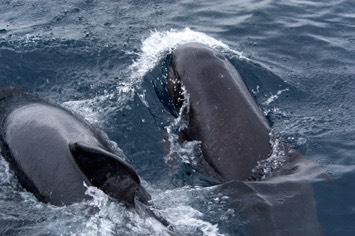
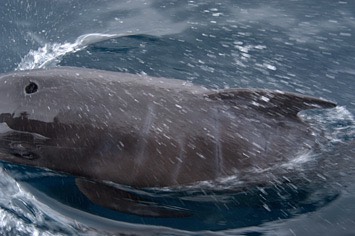
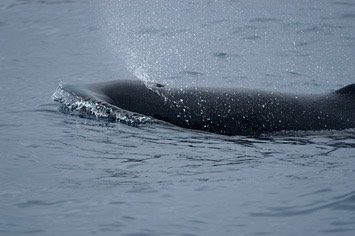
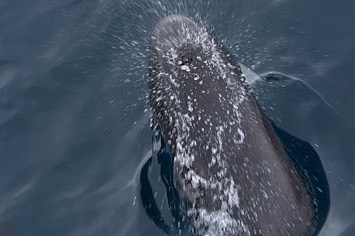
Only two very small groups of short-beaked common dolphins (Delphinus delphis) were encountered and both were associated with striped dolphins. But not every fin we saw belonged to a cetacean; there was a sunfish (Mola mola), too!
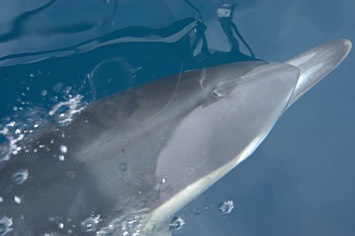
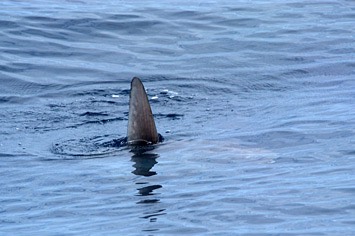
The left hand photo shows our research vessel, the Bluefin of Hamble, in Bilbao. Being Spain, there was also the inevitable fiesta, where a huge flotilla of boats of all kinds left the harbour accompanied by an impressively loud display of fireworks.
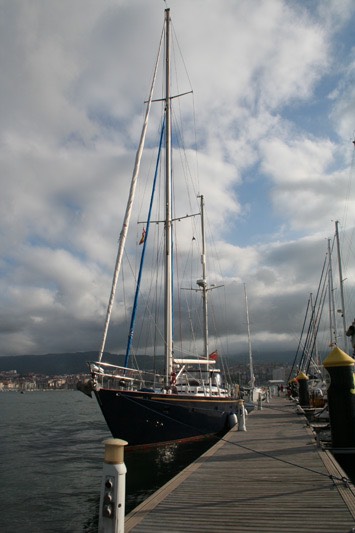
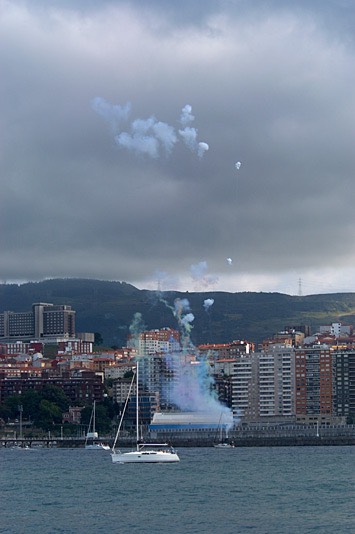
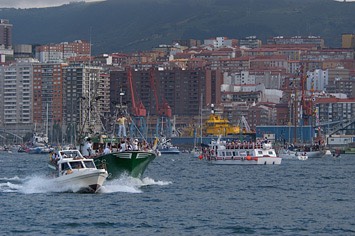
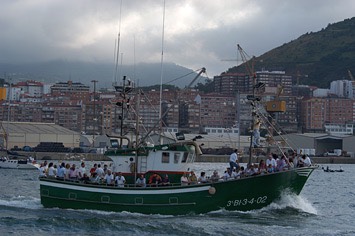
Colourful fishing boats were a common sight in the smaller harbours where we went alongside for the nights.
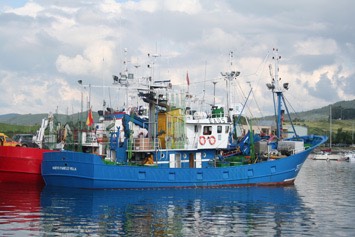
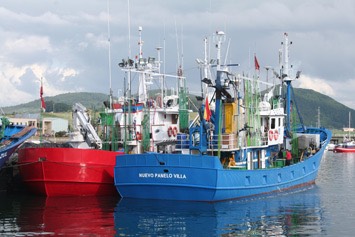
Our study area straddled the border between Cantabria and the Basque country, and signs of the struggle for Basque independence were often in evidence. We discovered a lot of animosity between the people of northern Spain, as we found to our embarrassment when we committed the cardinal sin of entering a Cantabrian port with our Basque flag still flying!
The weather can change very quickly in southern Biscay, as we experienced one day ourselves, when the wind suddenly gusted to 40 knots, after it was flat calm only moments earlier. A stranded yacht on the rocks was a warning to everybody not to underestimate the weather conditions!
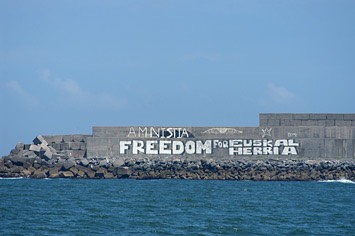
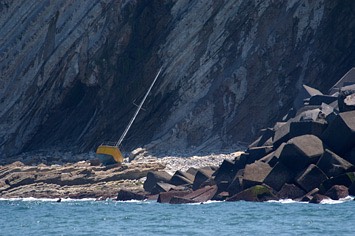
Did our frequent crossing in and out of Basque waters arouse suspicions? Police helicopters and fast Customs launches seemed to be keeping an eye on things.
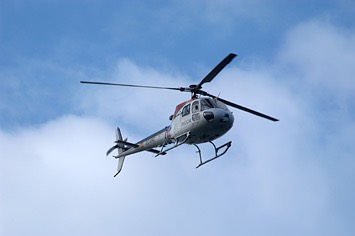
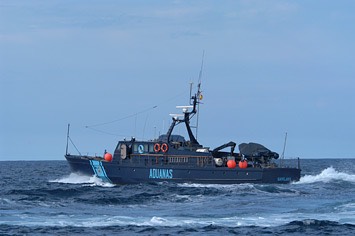
The scientific report for this study can be downloaded from the Seamark Trust's website or here.